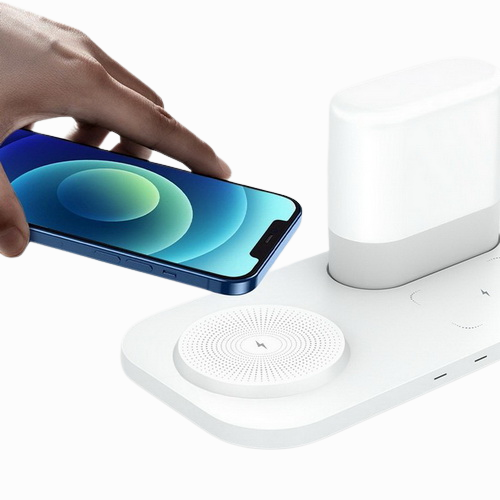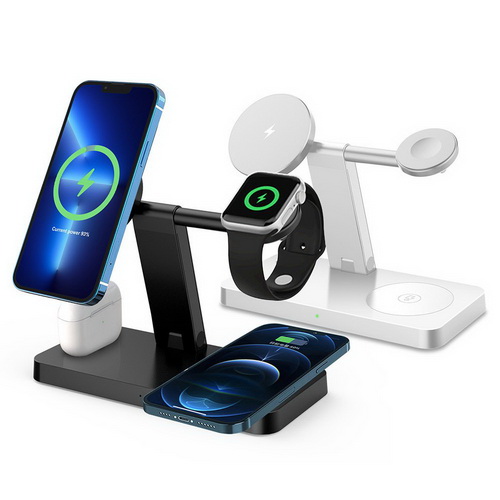When using chargeurs sans fil, in order to ensure safety, efficiency and extend the service life of the device and charger, the following main things need to be noted:
Compatibility check:
Make sure the wireless charger is compatible with the device to be charged. Different brands and models of devices may support different wireless charging standards (such as Qi, Power Matters Alliance, etc.), so you should choose a wireless charger that matches your device.
Proper placement of equipment:
Place the device exactly in the charging area of the wireless charger, ensuring that the charging interface or charging sensing area of the device is aligned with the corresponding area of the wireless charger. If the position is offset, it may lead to low charging efficiency or inability to charge.
Avoid metal objects:
During the wireless charging process, avoid placing metal items, such as keys and coins, between the device and the wireless charger. Metal objects may interfere with the transmission of electromagnetic fields and affect the charging effect.
Maintain ventilation:
When using a wireless charger, ensure that there is sufficient ventilation space around it and avoid placing it in a closed or high temperature environment for a long time. A certain amount of heat is generated during wireless charging, and good ventilation helps to dissipate heat and prevent device damage caused by overheating.
Avoid overcharging:
While modern devices are often equipped with overcharge protection, leaving a device on a wireless charger for an extended period of time can still cause damage to the battery. Therefore, it is recommended to remove the device in time after it is fully charged to avoid long-term overcharging.
Pay attention to power safety:
Use a power adapter that meets the specifications to power the wireless charger, and avoid using a substandard or power-mismatched power adapter. At the same time, ensure that power sockets and wires are safe and reliable to avoid safety hazards such as electric shock or fire.
Regular inspection and maintenance:
Regularly check the appearance and performance of the wireless charger, such as abnormal (such as abnormal heating, slow charging speed, etc.), should be stopped in time and repaired or replaced. At the same time, keep the wireless charger clean to avoid dust and debris entering the charging interface or affecting heat dissipation.
Avoid humid environments:
The wireless charger should be placed in a dry environment to avoid short circuit or damage caused by moisture or water splashing. If the wireless charger accidentally water, should immediately stop using and seek professional maintenance.
Following the above main points of use can ensure the safe and efficient use of wireless chargers, while extending the service life of devices and chargers.



